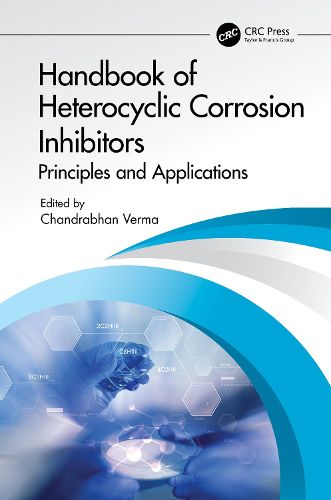Readings Newsletter
Become a Readings Member to make your shopping experience even easier.
Sign in or sign up for free!
You’re not far away from qualifying for FREE standard shipping within Australia
You’ve qualified for FREE standard shipping within Australia
The cart is loading…






Handbook of Heterocyclic Corrosion Inhibitors presents a comprehensive overview of corrosion inhibition using heterocyclic compounds. It covers numerous, emerging heterocyclic compound-based industrial corrosion inhibitors that are oriented toward minimizing corrosive damages and prevention methods.
Describing the fundamentals of heterocycles, corrosion, and corrosion inhibition, the book considers the potential of different series of N-heterocycles, such as acridine and acridone-based, carbazole-based, imidazole and imidazoline-based, indole and indoline-based, melamine-based, etc. It presents the corrosion inhibition potential of oxygen- and sulfur-based heterocycles compounds. The book also explores issues with corrosion as a result of improper design with descaling, acidification, refinery, and transport processes.
The book will be of interest to researchers and graduate students studying corrosion science, heterocyclic chemistry, material science and engineering, energy, chemistry, and colloid science. It will also be a valuable reference for corrosion scientists and R&D engineers working in industrial corrosion and industrial-based corrosion protection systems.
$9.00 standard shipping within Australia
FREE standard shipping within Australia for orders over $100.00
Express & International shipping calculated at checkout
Handbook of Heterocyclic Corrosion Inhibitors presents a comprehensive overview of corrosion inhibition using heterocyclic compounds. It covers numerous, emerging heterocyclic compound-based industrial corrosion inhibitors that are oriented toward minimizing corrosive damages and prevention methods.
Describing the fundamentals of heterocycles, corrosion, and corrosion inhibition, the book considers the potential of different series of N-heterocycles, such as acridine and acridone-based, carbazole-based, imidazole and imidazoline-based, indole and indoline-based, melamine-based, etc. It presents the corrosion inhibition potential of oxygen- and sulfur-based heterocycles compounds. The book also explores issues with corrosion as a result of improper design with descaling, acidification, refinery, and transport processes.
The book will be of interest to researchers and graduate students studying corrosion science, heterocyclic chemistry, material science and engineering, energy, chemistry, and colloid science. It will also be a valuable reference for corrosion scientists and R&D engineers working in industrial corrosion and industrial-based corrosion protection systems.